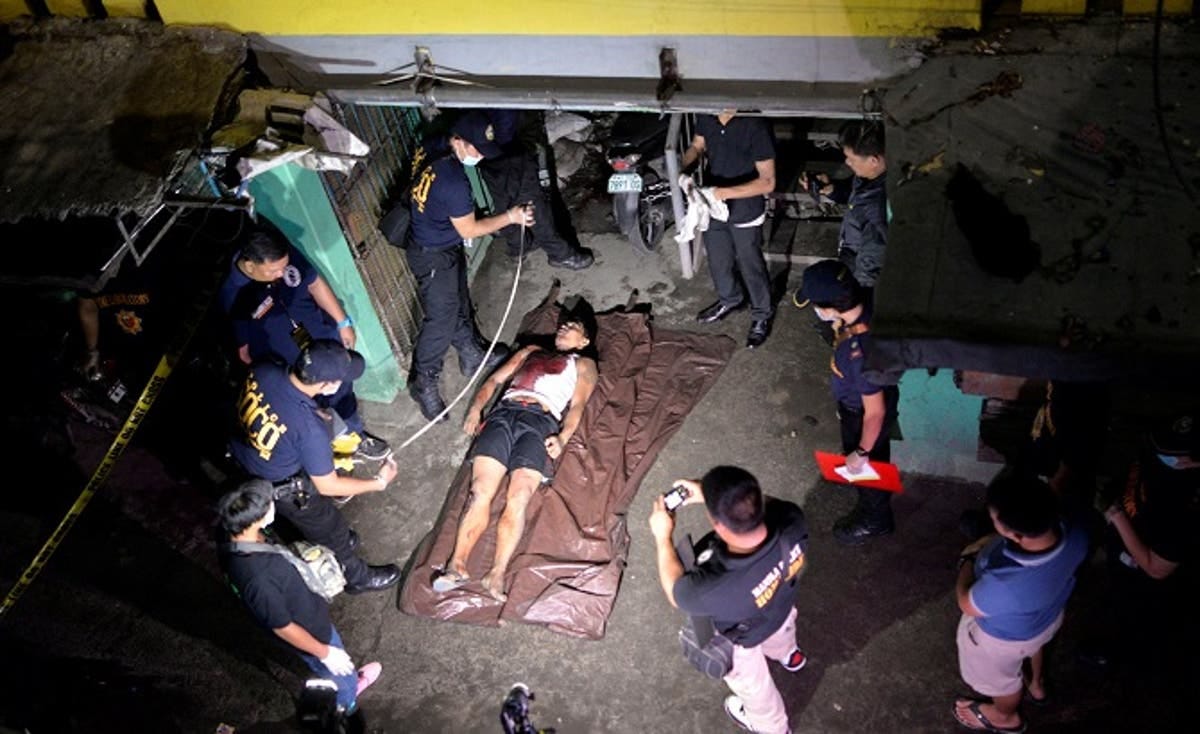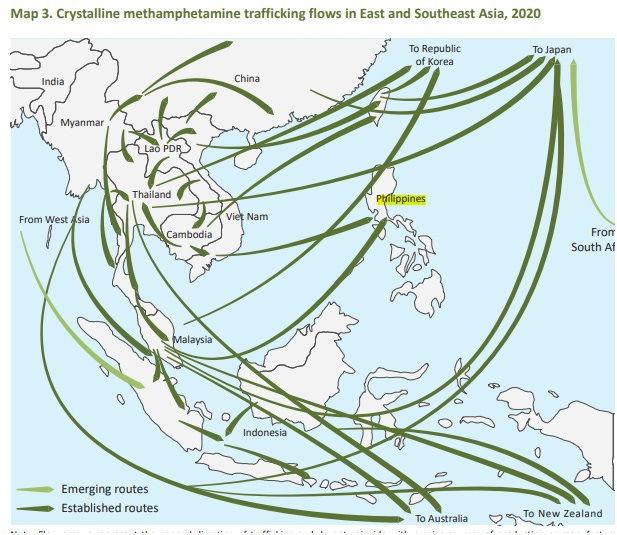[ad_1]

Five years after he promised to fill Manila Bay with the bodies of drug dealers and users, President Rodrigo Duterte’s war on drugs is hardly a success despite thousands of deaths, according to a 98-page report released by the United Nations Office on Drugs and Crime, which indicates that crystal methamphetamine – shabu – remains the drug of choice in the Philippines.
Shabu, the report said, continues to be the cause of the majority of drug-related arrests and treatment admissions in 2020, with the amount seized actually increasing. Authorities arrested more than 45,000 individuals for possession of shabu, with another 2,000 admitted for treatment or rehabilitation,
The Philippines is hardly alone, according to the report. The meth market in East and Southeast Asia has continued to expand, with the notorious Shan State in Myanmar’s Golden Triangle remaining the main source of manufacture in the region. Cambodia is increasingly being targeted, the report says, with organized crime diversifying their meth supply channels.
”The total amount of methamphetamine seized in East and Southeast Asia has continued to increase, reaching another record level in 2020 with preliminary data showing at least 169 tons of methamphetamine seized,” the UN agency found. Although seizures declined in East Asia, they were more than offset by Southeast Asia, largely in the lower Mekong countries including Laos, Myanmar, Cambodia, Thailand, and Vietnam.

However, it is Duterte who has made his murderous drug war a central focus of his presidency, which accounts for much of his popularity. Public opinion polls continue to show the drug war is popular.
According to police statistics, police had killed nearly 7,900 individuals during anti-drug operations since the campaign started in 2016, claiming most of them were in shootouts with police, an observation met with deep skepticism. No statistics are yet available for 2021, although Duterte called repeatedly for tougher measures by police.
Indeed, according to the 2021 Human Rights Watch World Report, “the Duterte administration appeared to take advantage of Covid-19 curfews in 2020 to expand its gruesome and bloody ‘war on drugs,’” quoting Phil Robertson, the Thailand-based deputy Asia director. “At the same time, government ‘red-baiting’ of leftist activists, rights defenders, and others has put them at greater risk of deadly attack.”
Death squads are believed to have killed thousands more. Local human rights groups put the total at more than 25,000 although that figure can’t be verified. More than 250,000 have been arrested or turned themselves in according to local records.
The UNODC report echoes findings that the drug war has been ineffective, as claimed by Philippine Vice President Leni Robredo, who was dared by Duterte to take over the drug enforcement program in late 2020. Eighteen days later, he fired her after she began using official statistics to prove that the government had been unable to seize more than 1 percent of the total supply of drugs in the country.
From the start, the drug program has been suspect. Although Duterte claimed there were 3 million to 4 million drug users in the Philippines, his own Dangerous Drugs Board in 2016 contradicted that, saying 1.8 million Filipinos might use the drug, including some who might use it at least once in a year. So Duterte fired the head of the drugs board.
According to the UNODC’s summary of drug activity in the Philippines, overall drug treatment admissions declined in 2020, and admissions for treatment related to methamphetamine use more than halved due to the Covid-19-related restrictions, the suspension of admission during the height of the pandemic and a shift in government priorities, from rehabilitation to Covid-19 response.
Despite the mobility restrictions, the annual seizure of crystalline methamphetamine in 2020, TT 2,196 kg, exceeded the quantity recorded for 2019 at 2,071 kg. But as Robredo’s 2020 report showed, that is a minuscule amount actually circulating throughout the country. Crystal meth represented the reason for the largest proportion of drug-related arrests and treatment admissions in 2020, although the average purity of crystal meth in the Philippines declined from 2017 to 2020, with some seizures of methamphetamine found with purity as low as 1.9 percent.
As to other drugs, although seizures of “ecstasy” increased slightly in 2020, its use remains low in the Philippines. With the exception of gamma-butyrolactone (GBL), which is sold as ”liquid ecstasy” in the Philippines, no other NPS were reported in 2020. No seizures of benzodiazepines were reported in 2020. However, experts perceive that the use of benzodiazepines increased in 2020 and this is consistent with an increase in the number of treatment admissions for non-medical use of benzodiazepines.
Not enough information is available to determine to what extent this trend reflects the typical purity of methamphetamine sold at the retail level, the report said. “Ecstasy” tablets sold in the country may contain a range of substances in varying composition and quantities in addition or instead of MDMA. Although the use of benzodiazepines remains low in the Philippines, accounting for less than 1 percent of drug treatment admissions, drug treatment admission data reported by the DDB indicates that benzodiazepines are the fourth most common drug for facility-based treatment admissions in 2020, behind methamphetamine, cannabis, and codeine, with 24 of the 25 treatment admissions for benzodiazepines being new admissions.
[ad_2]
Source link